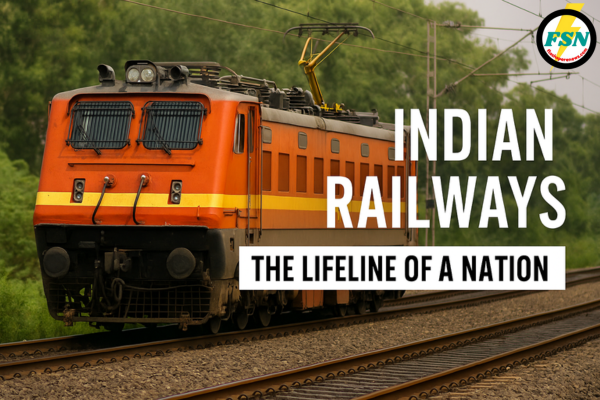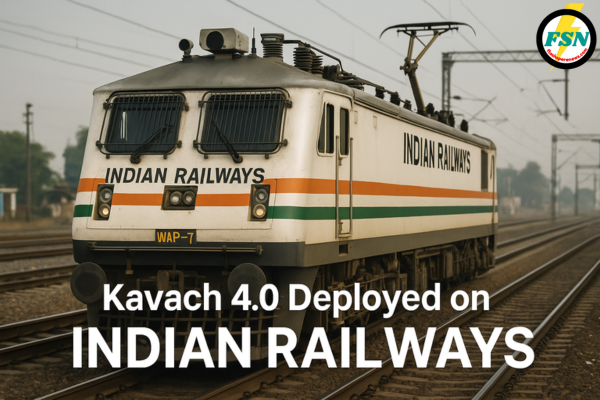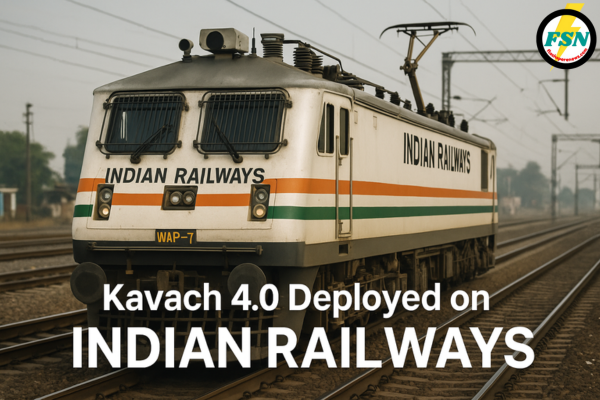Indian Railways — The Lifeline of a Nation: Past, Present & Future

Introduction
Indian Railways is more than just a mode of transport. It is a symbol of unity, a reflection of India’s diversity, and a testimony to its economic and social evolution. From the first passenger train journey between Bombay and Thane in 1853 to becoming one of the world’s largest rail networks, Indian Railways has connected remote villages to mega cities and people to opportunities. In this comprehensive blog, we explore the history, infrastructure, achievements, challenges, and future of Indian Railways — an institution that truly binds the nation together.
1. The Origin and Early Evolution of Indian Railways
The journey of Indian Railways began under British colonial rule. On April 16, 1853, the first train ran between Bombay and Thane, covering 34 kilometers. This event marked the beginning of a transformative era in Indian transportation. Over time, the railway network expanded across various provinces, serving colonial trade interests. However, it also laid the foundation for a connected India, aiding the freedom movement by enabling mass mobilizations.
In its early decades, Indian Railways was more about freight than passengers. It played a critical role in transporting goods, particularly raw materials from the interiors to ports. The construction of key routes like the East Indian Railway, South Indian Railway, and others was instrumental in integrating different regions.
By the early 1900s, the railway network spanned more than 50,000 kilometers. British companies managed the majority of the lines, but Indian workers were at the heart of operations — from laying tracks to driving locomotives. Over time, railways began playing a central role in connecting princely states and British territories, creating an unprecedented sense of geographical unity. This connectivity helped shape the foundation for future political unity and economic integration.
The development of railway workshops in places like Jamalpur and the establishment of training schools reflected the scale and vision with which Indian Railways operated, even during the colonial era. Indian engineers and mechanics gained valuable experience, sowing the seeds for future innovation and self-reliance.
Additionally, Indian Railways played a significant role in times of crises. During famines or epidemics, trains were used to deliver food and medical supplies. This logistical strength became a cornerstone of India’s emergency response strategy in the decades to come.
2. Indian Railways After Independence: Rebuilding a Legacy
Post-independence, Indian Railways transitioned from colonial machinery to a national asset. The government focused on expanding connectivity, electrification, and indigenous development. Nationalization allowed better planning and uniform policies. In 1951, various railway systems were amalgamated into a single unit — Indian Railways. This consolidation aimed to create a more efficient and cohesive transportation infrastructure.
During the Nehruvian era of planning, the Five-Year Plans gave special emphasis to rail development. Railways became a key driver of economic growth, enabling industrial zones, steel plants, and agricultural hubs to thrive. New lines were laid in underserved regions like the Northeast and tribal belts. These projects weren’t just economic investments but political commitments to national unity and integration.
Several landmark initiatives were introduced:
- 1957: Establishment of the Railway Staff College (now NAIR) to train officers
- 1960s–70s: Introduction of diesel and electric locomotives
- 1980s: Computerized reservation system revolutionized ticketing
- 1990s: Introduction of superfast trains like Shatabdi and Rajdhani
The 1990s also saw a push toward globalization, and Indian Railways had to modernize to stay competitive. This led to the launch of internet-based ticketing systems, dedicated freight corridors, and integrated logistics planning. Indian Railways also started exploring tourism and heritage experiences, blending tradition with progress.
Notable investments were also made in suburban train systems for metro cities like Mumbai, Chennai, and Kolkata — ensuring that daily commuters could rely on affordable, accessible public transportation. This urban focus helped support rapid industrialization and migration patterns.
The liberalization of the economy in the 1990s brought with it the need for efficiency and productivity. Indian Railways had to evolve into a commercially viable enterprise while maintaining its social obligations. This dual role led to the adoption of technology, cost-effective operations, and corporate-style governance practices.
3. Scale and Structure of Indian Railways
Indian Railways is one of the largest employers globally, with over 1.2 million employees. It operates more than 13,000 passenger trains and 8,500 freight trains daily, traversing over 67,000 kilometers of track. The railways are divided into 18 zones, each with multiple divisions to manage operations efficiently.
Its assets include:
- Over 7,000 railway stations
- Approximately 12,000 locomotives
- 2.5 lakh freight wagons
- Over 75,000 passenger coaches
- World-class production units in Chennai, Kapurthala, Chittaranjan, and Rae Bareli
Indian Railways has also developed specialized arms:
- IRCTC: For catering, tourism, and online booking
- RITES and IRCON: For consultancy and infrastructure projects
- Dedicated Freight Corridors Corporation of India (DFCCIL): Managing high-capacity freight routes
To support digital growth, Indian Railways introduced the National Rail Plan, which forecasts freight and passenger demand up to 2051. It focuses on data-backed decision-making, capacity expansion, and synchronized development with other transport modes.
Additionally, the public-private partnership (PPP) model is being explored for station redevelopment and high-speed rail projects, inviting global players to collaborate with Indian Railways. This move aims to blend international expertise with India’s massive railway potential.
The operational complexity of Indian Railways is astounding — from managing timetables across climatic zones to ensuring safety standards across thousands of kilometers. Innovations like centralized traffic control, signaling automation, and AI-based crew deployment are helping make this vast machine run smoother.

4. Technological Advancements and Modernization
The modernization of Indian Railways has been relentless. Key technological innovations include:
- Electrification: Over 80% of the broad gauge network is electrified, reducing dependence on fossil fuels and cutting emissions.
- Digital Ticketing: With IRCTC, Indian Railways revolutionized how Indians book train tickets, now offering seamless online services via mobile apps and websites.
- High-Speed Rail: The introduction of semi-high-speed trains like Vande Bharat Express and the upcoming Mumbai-Ahmedabad bullet train corridor aims to redefine travel standards.
- Smart Stations: Redevelopment of railway stations with world-class amenities — like New Delhi, Rani Kamalapati, and Gandhinagar stations — exemplifies modernization.
- Kavach System: This indigenous safety mechanism prevents collisions and enhances signaling reliability.
In addition, Indian Railways is implementing:
- Biometric ticketing and AI-enabled surveillance
- GPS-based tracking of trains for real-time updates
- Smart coaches with infotainment, bio-toilets, and IoT sensors
Railways have also tested automatic door coaches, CCTV-enabled train security, solar-powered engines, and waste-to-energy plants in select stations. These small innovations accumulate to create a massive transformation.
Urban projects like metro-rail integration and multimodal transport hubs are also being pursued. These initiatives aim to offer last-mile connectivity for passengers while reducing urban congestion.
Modernization also includes backend improvements: cloud-based databases for freight operations, blockchain for asset tracking, and green corridors to eliminate carbon footprints. Indian Railways has set ambitious goals for becoming net-zero by 2030, making it a sustainability pioneer.
5. The Economic Role of Indian Railways
Indian Railways is often called the lifeline of the Indian economy. It:
- Transports over 1.2 billion tons of freight annually
- Facilitates passenger movement for over 8 billion people annually
- Contributes approximately 1% to India’s GDP
From coal, cement, food grains to automobiles, Indian Railways supports every sector. It’s instrumental in Make in India, Atmanirbhar Bharat, and other economic initiatives.
Dedicated Freight Corridors are reducing transit times for goods, boosting logistics efficiency. The eastern and western corridors connecting Ludhiana, Dadri, Mumbai, and Dankuni are poised to transform industrial logistics. These corridors aim to decongest traditional routes and ensure faster, more cost-effective delivery.
Indian Railways also aids tourism:
- Luxury Trains: Palace on Wheels, Maharajas’ Express, Golden Chariot
- Pilgrimage Circuits: Ramayana Circuit, Buddhist Circuit, Jyotirlinga Yatra
- Heritage Routes: Nilgiri Mountain Railway, Darjeeling Himalayan Railway
These services don’t just serve tourists but help local economies by increasing employment, local business revenues, and infrastructural development.
Additionally, Indian Railways enables access to markets for millions of farmers and small producers. The introduction of “Kisan Rail” services ensures that perishable goods like fruits and vegetables reach markets swiftly, minimizing waste and maximizing income.
The revenue model of Indian Railways is diversifying with non-fare income streams — station advertising, leasing spaces for retail outlets, monetizing land parcels, and strategic investments in real estate projects around major junctions.
6. Social Impact and Human Touch of Indian Railways
The romance of Indian Railways lies in its human stories:
- Vendors shouting ‘chai, samosa’ at platforms
- Family vacations packed with excitement
- Friendships formed in shared compartments
- The lull of tracks that rock passengers to sleep
This emotional connection is why Indian Railways continues to be beloved. Whether it’s the nostalgia of childhood journeys or the thrill of train spotting, the bond is irreplaceable.
Socially, Indian Railways is also a massive equalizer. It offers affordable travel to students, senior citizens, and underprivileged groups. Coaches for differently-abled travelers, security helplines for women, and initiatives like “One Station One Product” support inclusivity and empowerment.
It has also supported migrant workers during crises like the COVID-19 pandemic, when Shramik Special trains reunited thousands with their families. Indian Railways not only moves goods and passengers — it moves lives.
From mobile health clinics in rural trains to railways’ role in transporting election materials across India’s vast geography, its social reach is unparalleled. Education through onboard libraries, promotion of regional arts and crafts at stations, and eco-initiatives like plastic-free platforms further enhance its civic contributions.
Conclusion
Indian Railways is not just about trains — it’s about people, progress, and possibilities. It reflects India’s journey from colonial past to digital future, all while connecting the length and breadth of the country. With its ambitious goals and unwavering spirit, Indian Railways is poised to redefine mobility for generations to come.
From every whistle blown to every station crossed, Indian Railways carries the soul of India on its iron tracks.

